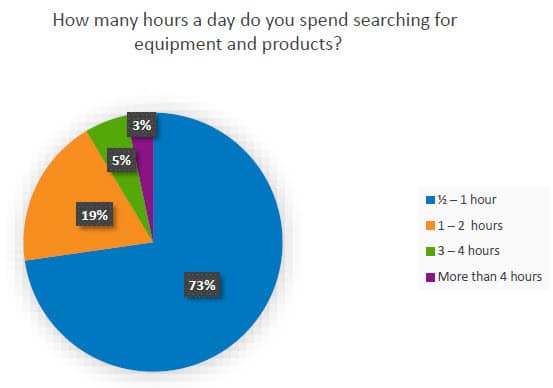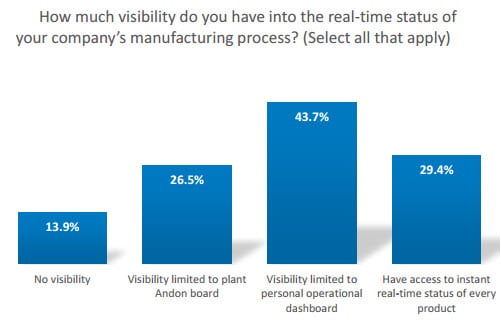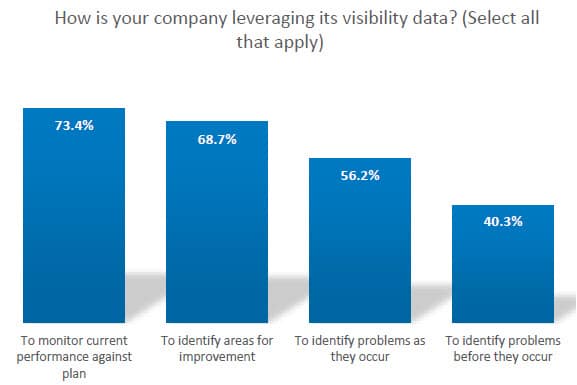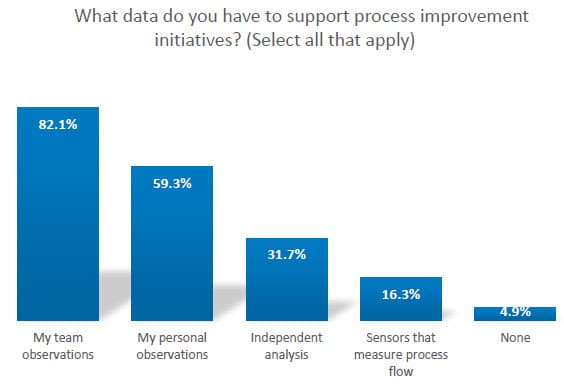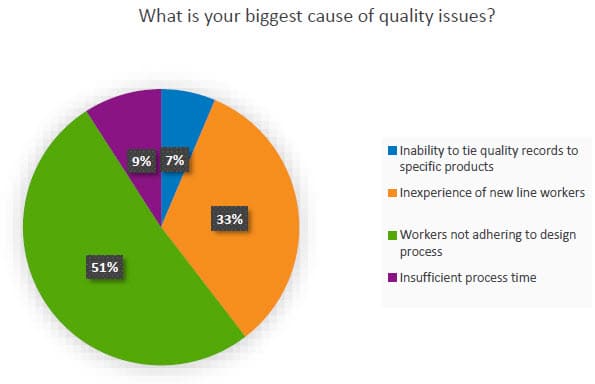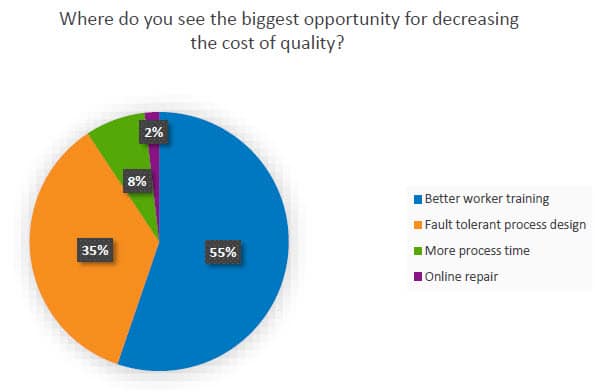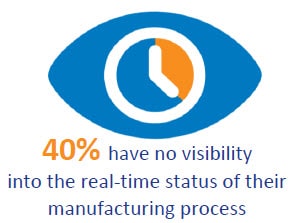 40.4% of manufacturers have no visibility into the real-time status of their manufacturing process.
40.4% of manufacturers have no visibility into the real-time status of their manufacturing process.
78.8% rely on team observations to support process improvement initiatives.
84% cite worker errors for the cause of quality issues.
These and additional take-aways are from the study conducted by Ubisense, 2014 Smart Manufacturing Technologies Survey (Opt-in required). They have commissioned SME and Manufacturing Engineering Media to conduct the 2014 Smart Manufacturing Technologies Survey on its behalf. Industry 4.0 is a German government initiative that promotes automation of the manufacturing industry with the goal of developing Smart Factories.
This survey targeted manufacturing engineers, product design, and quality management professionals in Aerospace (50.8%), Construction & Mining (24.9%) and Passenger Vehicle (24.3%) industries. The responses were collected in May 2014 over a three-week period from 252 U.S.-based manufacturers.
Key take-aways from the survey results include the following:
- 8% of manufacturers spend half their day and 19% spend 1-2 hours a day simply searching for equipment and products. This non-value-added time can result in significant wastage which can accumulate to a significant cost annually. When one part of the manufacturing process is wasting time to locate their equipment and products, the workflow is paused and causes costly delays to product completion. The following graphic provides an overview of how many hours per day are spend searching for equipment and products.

- 9% of manufacturers have no visibility at all, 26.5% have limited visibility to plant and on board, and 43.7% have limited visibility to only personal operational dashboard. This equates to 40.4% of manufacturers have no visibility into the real-time status of their manufacturing process. Only 29.4% have instant real-time status of every product, who are the closest to adopting Industry 4.0 principles. In order to be capable of making real-time decisions, factory processes must be visible and controllable in real-time. The following graphic illustrates how much visibility manufacturing engineers have into the manufacturing process.

- 2% of manufacturers are using the visibility data they have to identify problems as they occur, and only 40.3% are using it to identify problems before they occur. This means that more than half of the manufacturers only become aware of a crisis after it happens. The problem with being in reactive mode is that engineers most likely have to restart processes and stop the work flow to get a production center running at high efficiency again.

- When supporting process improvement initiatives, 78.8% of manufacturers rely on human observations, 16.3% on sensors that measure process flow, and 4.9% do not rely on any data. This means that the majority of manufacturers rely on subjective, rather than objective, data when making improvement decisions. Without collecting hard data, underlying factors that cause issues and delays may go unnoticed.

- 51% of manufacturers say workers who don’t adhere to design processes are the catalyst of the biggest cause of quality issues, followed by inexperience of new line workers (33%). That is a total of 84% of manufacturers claiming that the workers’ training and opportunities for performance improvement are the cause of quality issues. Only 16% blame insufficient process time and inability to tie quality records to specific products for the main cause of quality issues.

- 55% of manufacturers feel that better worker training is the biggest opportunity for decreasing the cost of quality, followed by 35% fault tolerant process design, 8% more process time, and 2% online repair. But better worker training may not be the best solution here, as work instructions and processes change all the time. In Industry 4.0 concepts, error-proofing technologies such as reconfigurable electronic work instructions should guide workers to implement the processes correctly.

Source: Ubisense, Smart Manufacturing Technologies Survey White Paper, 2014.
Learn how you can improve your MES performance in complex manufacturing from the iBase-t’s free eBook below:

